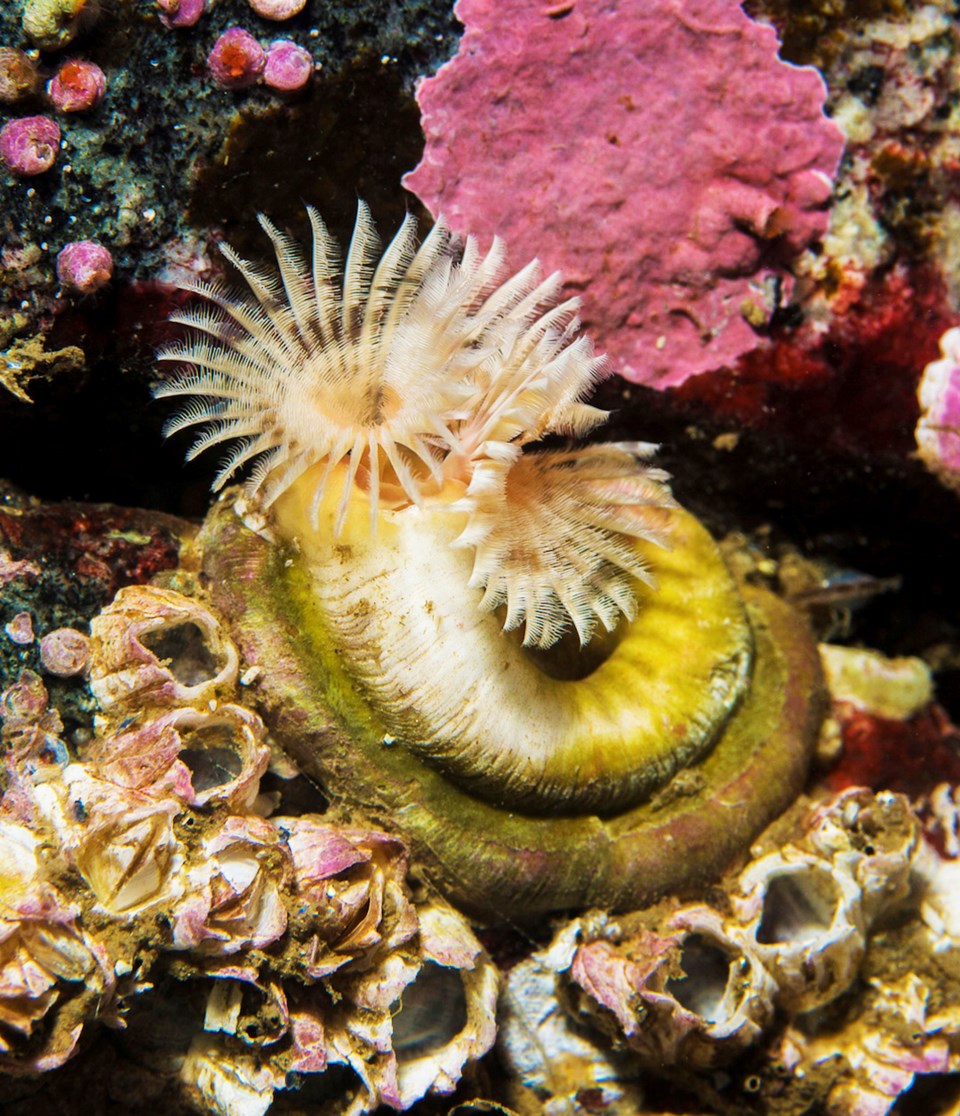The “feathery” animal pictured is Serpula columbiana, also called a fan worm or calcareous tube-worm. These creatures reach sexual maturity in less than a year, and during mating season, the adults release sperm and eggs into the sea where fertilization takes place. The larvae spend several months in the plankton, feeding and growing, before dropping to the bottom to settle on rocks and dock pilings. There they begin to construct their tubes.
If you happen to see the Serpula on a dock piling, Bowen Island’s Government dock, for example, its hard tube-shell will extend outwards like a straw. If you see them on a rock, the vertical tubes will be flattened by the wave action. On a calm day you can see these tubes, and if the worms are feeding the fans will be out. Once the tide goes out, the worms withdraw into tube.
The shafts of the “feathers” are technically called “radioles.” Small vibratile organelles on the surface of these radioles, called cilia, create feeding currents, filtering phytoplankton, zooplankton, and detritus from the sea water, and trapping it in mucus in the feeding funnel. (We humans have cilia on the cells in our windpipes, they trap particles of dirt and debris, transporting them from the lungs to the throat and eventually stomach to be digested or excreted.) The cilia then transport the trapped food to the mouth.
The fan worm can rapidly withdraw its feathery crown when a predator, such as a starfish or fish passes by, and then can slowly extend its crown by pumping blood back into the radioles – so the radioles are also considered branchiae or gills as they help to oxygenate this worm’s blood.



